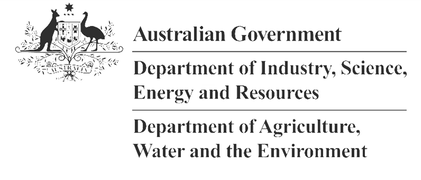What is this about?
Flying-foxes (Pteropus spp.) are large, extremely mobile bats that are difficult to monitor, which poses serious impediments to the sound conservation management of these ecologically important species (Welbergen et al., 2020).
Traditional counting methods have limited accuracy and precision, and are subject to errors that are not well-defined (McCarthy et al., 2022), which means that population trends can only be established with significance after (many) years of monitoring (e.g., Westcott et al., 2012, 2015). However, our team has recently demonstrated that weather radar data provide reliable information on the abundance of flying-foxes in a camp (roost), both retrospectively and in real-time (Meade et al., 2019). In addition, we have shown that drone-based thermal remote sensing provides a highly accurate and precise new tool for monitoring the abundance of flying-foxes in a camp (McCarthy et al., 2021).
|
Capitalising on these recent methodological advances, we are developing a landscape-scale network of 10 radar-monitored 'Nationally Important' roosts of the vulnerable grey-headed flying-fox (P. poliocephalus) in Australia, as part of our project funded under Australia's Regional Bushfire Recovery for Multiregional Species and Strategic Projects Program.
Below are the preliminary outcomes of our this work, showing the real-time and archival weather radar-derived estimates of the numbers of flying-foxes present in select roosts, providing a strong proof-of concept for the use of weather radar data to monitor flying-foxes across their ranges. As our research in this area progresses, more roosts will be added, and the radar-derived estimates will be refined by callibrating them against our observations from drone-based thermal remote sensing (McCarthy et al., 2022). We anticipate that, in time, this network will provide reliable information on how the species is distributed across its range, both in real-time and going back for a period of up to 30 years, thus greatly enhancing the capacity for flying-fox conservation managers to detect significant population trends over shorter timeframes and respond more quickly and proactively to threats.
|

|
Adelaide Botanic Gardens (Adelaide, South Australia)

|
  |
Yarra Bend (Melbourne, Victoria)

|
  |
Bairnsdale

|
  |
Campbelltown (Sydney, New South Wales)

|
  |
Kareela (Sydney, New South Wales)
 |
  |
Wolli Creek (Sydney, New South Wales)
 |
  |
Macquarie Fields (Sydney, New South Wales)
 |
  |
Parramatta (Sydney, New South Wales)
 |
  |
Raymond Terrace (New South Wales)
 |
  |
East Cessnock (New South Wales)
 |
  |
Grafton (New South Wales)
 |
  |
Maclean (New South Wales)
 |
  |
Gympie (Queensland)
 |
  |
Woocoo (Queensland)
 |
  |
Hervey Bay (Queensland)
 |
  |
Background information
About flying-foxes
Flying-foxes are charismatic, very large species of bat that forage by night and roost by day in arboreal roosts that can comprise tens of thousands of individuals. They provide important ecosystem services, including pollination of wild and cultivated crops and seed dispersal (e.g., Fujita & Tuttle 1991; Aziz et al. 2021). However, they are exposed to threatening anthropogenic factors (DAWE 2021), including loss of foraging and roosting habitat (e.g. Woinarski et al. 2014), direct killing and harassment of animals in orchards (Tidemann & Vardon, 1997), and mass die-off events when temperatures exceed 42 °C (Welbergen et al. 2008; Ratnyake et al. 2019; Mo et al. 2021). Australian flying-foxes have also been linked to several emerging zoonotic diseases (e.g., Halpin et al. 1999), which can be a cause of public concern.
Flying-foxes are charismatic, very large species of bat that forage by night and roost by day in arboreal roosts that can comprise tens of thousands of individuals. They provide important ecosystem services, including pollination of wild and cultivated crops and seed dispersal (e.g., Fujita & Tuttle 1991; Aziz et al. 2021). However, they are exposed to threatening anthropogenic factors (DAWE 2021), including loss of foraging and roosting habitat (e.g. Woinarski et al. 2014), direct killing and harassment of animals in orchards (Tidemann & Vardon, 1997), and mass die-off events when temperatures exceed 42 °C (Welbergen et al. 2008; Ratnyake et al. 2019; Mo et al. 2021). Australian flying-foxes have also been linked to several emerging zoonotic diseases (e.g., Halpin et al. 1999), which can be a cause of public concern.
Flying-fox monitoring
Monitoring is required to obtain data on flying-fox distribution, abundance, and population dynamics. Knowledge of species abundance, distribution, and population dynamics is crucial for conservation planning, and also allows for the assessment of the effectiveness of management activities and the impacts of catastrophic events. Monitoring is of growing importance as human impacts increase the necessity for conservation management of wild populations (e.g., Westcott et al., 2012).
Monitoring is required to obtain data on flying-fox distribution, abundance, and population dynamics. Knowledge of species abundance, distribution, and population dynamics is crucial for conservation planning, and also allows for the assessment of the effectiveness of management activities and the impacts of catastrophic events. Monitoring is of growing importance as human impacts increase the necessity for conservation management of wild populations (e.g., Westcott et al., 2012).
About the flying-fox radar monitor
Our team has recently demonstrated that weather radar data provide reliable information on the abundance of flying-foxes in a roost (camp), both retrospectively and in real-time at a daily resolution. The radar monitor estimates the numbers of bats emerging from their roosts by converting radar reflectivity factor to reflectivity (cm2/km3), and dividing this by the radar cross section of a grey-headed flying-fox (see Meade et al. (2019) for a detailed description of the methods).
Our team has recently demonstrated that weather radar data provide reliable information on the abundance of flying-foxes in a roost (camp), both retrospectively and in real-time at a daily resolution. The radar monitor estimates the numbers of bats emerging from their roosts by converting radar reflectivity factor to reflectivity (cm2/km3), and dividing this by the radar cross section of a grey-headed flying-fox (see Meade et al. (2019) for a detailed description of the methods).
Limitations of the flying-fox radar monitor
While radar holds great promise as a tool for monitoring flying-foxes, it can only complement rather than supplant conventional monitoring methods. The radar coverage across the grey-headed flying-fox’s range is not complete, so some colonies cannot be detected by radar for this reason alone. In addition, as colonies are located further away from radar towers, the radar scans typically pass higher overhead, and in some cases this can be too high to detect any flying individuals. Furthermore, some colonies are blocked from the radar beam by clutter or landscape features (see here for beam blockage maps for each Australian radar). Moreover, the flying-fox radar monitor cannot distinguish between individuals of different species. Some colonies are known to comprise only one species (for example the grey-headed flying-fox range extends much further south than any other species), but others contain two, three or even all four mainland species of flying-fox. Given these limitations, conventional monitoring methods will remain needed for comprehensive, species-specific monitoring of flying-foxes across their ranges.
While radar holds great promise as a tool for monitoring flying-foxes, it can only complement rather than supplant conventional monitoring methods. The radar coverage across the grey-headed flying-fox’s range is not complete, so some colonies cannot be detected by radar for this reason alone. In addition, as colonies are located further away from radar towers, the radar scans typically pass higher overhead, and in some cases this can be too high to detect any flying individuals. Furthermore, some colonies are blocked from the radar beam by clutter or landscape features (see here for beam blockage maps for each Australian radar). Moreover, the flying-fox radar monitor cannot distinguish between individuals of different species. Some colonies are known to comprise only one species (for example the grey-headed flying-fox range extends much further south than any other species), but others contain two, three or even all four mainland species of flying-fox. Given these limitations, conventional monitoring methods will remain needed for comprehensive, species-specific monitoring of flying-foxes across their ranges.
Plans for further development and applications
We plan to include more flying-fox roosts to the website as we process the long-term data; this is currently a work-in-progress. While the data currently presented include only the evening ‘fly-out’ of flying-foxes emerging from their roosts, we also plan to process the ‘fly-in’ data and use this to further verify the estimates basedd on the fly-out scans. In addition, we intend to use the thermal drone-based methods recently developed by our team (McCarthy et al., 2021; McCarthy et al. 2022) to calibrate the radar counts where necessary. Finally, our data have confirmed that flying-foxes emerge from their roost at predictable times with respect to both sunset and time of the year (Welbergen 2006; Welbergen 2008; Meade et al, 2019), and we intend to use these predictable emergence timings to search for and identify previously unidentified flying-fox colonies based on tell-tale signals of reflectivity in the radar scans.
We plan to include more flying-fox roosts to the website as we process the long-term data; this is currently a work-in-progress. While the data currently presented include only the evening ‘fly-out’ of flying-foxes emerging from their roosts, we also plan to process the ‘fly-in’ data and use this to further verify the estimates basedd on the fly-out scans. In addition, we intend to use the thermal drone-based methods recently developed by our team (McCarthy et al., 2021; McCarthy et al. 2022) to calibrate the radar counts where necessary. Finally, our data have confirmed that flying-foxes emerge from their roost at predictable times with respect to both sunset and time of the year (Welbergen 2006; Welbergen 2008; Meade et al, 2019), and we intend to use these predictable emergence timings to search for and identify previously unidentified flying-fox colonies based on tell-tale signals of reflectivity in the radar scans.
Useful links
- The National Flying-Fox Monitoring Program
- Flying-foxes - New South Wales Government
- Flying-foxes - Victorian Government
- Flying-foxes - South Australian Government
- Flying-foxes - Queensland Government
- The Australasian Bat Society Flying-Fox Expert Group
See also:
Attributions & acknowledgements
Necessary disclaimer
Our flying-fox radar estimates are based on best-practice predictions from computer model data. Nevertheless, the predictions may under- or overestimate the true numbers of flying-foxes present. We cannot accept any responsibility for the loss or damage that may result from reliance on, or the use of, any information contained on this webpage.
References
MCCARTHY, E. D., MARTIN, J. M., BOER, M. M. & WELBERGEN (2022). Ground-based counting methods underestimate true numbers of a threatened colonial mammal: an evaluation using drone-based thermal surveys as a reference. Wildlife Research, doi: 10.1071/WR21120
YABSLEY, S. H., MEADE, J., HIBBURT, T., MARTIN, J. M., BOARDMAN, W. S. J., NICOLLE, D., WALKER, M., TURBILL, C & WELBERGEN, J. A. (2022). Variety is the spice of life: flying-foxes exploit a variety of native and exotic food plants in an urban landscape mosaic. Frontiers in Ecology and Evolution, 10:907966
MEADE, J., MARTIN, J. M., & WELBERGEN, J. A. (2021). Fast food in the city? Nomadic flying-foxes commute less and hang around for longer in urban areas. Behavioral Ecology, 32: 1151-1162
YABSLEY, S. H., MEADE, J., MARTIN, J. M., & WELBERGEN, J. A. (2021). Human-modified landscapes provide key foraging areas for a threatened flying mammal: The grey-headed flying-fox. Plos One, 16: e0259395.
MCCARTHY, E. D., MARTIN, J. M., BOER, M. M. & WELBERGEN (2021). Drone-based thermal remote sensing provides an effective new tool for monitoring the abundance of roosting fruit bats. Remote Sensing in Ecology and Conservation, 7: 461-474
WELBERGEN, J. A., MEADE, J., FIELD, H., EDSON, D., McMICHAEL, L., SHOO, L. P., PRASZCZALEK, J., SMITH, C., MARTIN, J. (2020) Extreme mobility of the world's largest flying mammals creates key challenges for management and conservation. BMC Biology, 18: 101
MEADE, J., VAN DER REE, R., STEPANIAN, P. M., WESTCOTT, D. A. & WELBERGEN, J. A., 2019. Using weather radar to monitor the number, timing and directions of flying-foxes emerging from their roosts. Scientific Reports, 9(1):10222.




